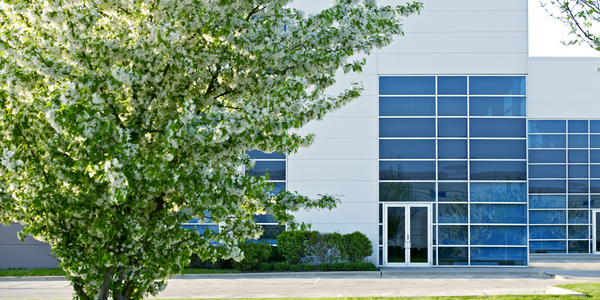Customer Company Size
Large Corporate
Region
- Europe
- America
- Asia
Country
- Germany
- Brazil
- China
- India
- Russia
- United States
Product
- HPE SimpliVity
Tech Stack
- Hyperconverged Infrastructure
- Data Virtualization
- VMware vCenter
Implementation Scale
- Enterprise-wide Deployment
Impact Metrics
- Cost Savings
- Productivity Improvements
Technology Category
- Infrastructure as a Service (IaaS) - Cloud Computing
Applicable Industries
- Cement
Applicable Functions
- Business Operation
Services
- Cloud Planning, Design & Implementation Services
About The Customer
KHD is a global leader in cement plant technology, equipment, and services with over 155 years of experience in the cement industry. The company offers a wide spectrum of products and aftermarket services for the cement industry and is a leader in energy-efficient and environmentally friendly products for the grinding and pyroprocessing sections of cement plants. In addition to its high-quality product offering, the technology-focused group includes process engineering and project management among its core competencies. KHD is headquartered in Cologne, Germany, and has locations in India, Russia, China, Brazil, and the United States. As KHD’s business has expanded globally, so has its data growth rates and challenges with legacy IT infrastructure.
The Challenge
KHD, a global leader in cement plant technology, equipment, and services, was facing challenges with its legacy IT infrastructure. The company's data growth rates were increasing, and the costs associated with managing this data were also on the rise. The complexity within the data center was growing, with the need to deploy numerous different deduplication, compression, and optimization appliances to keep up with data growth and the performance requirements of enterprise applications. The increasing capital costs for added storage, compute, various appliances, and software licensing were a concern. Additionally, operational expenses were mounting as administrators were spending countless hours on menial maintenance tasks instead of focusing on innovation to drive the business forward. In certain countries, where staff turnover rates are typically high, the lack of trained IT resources was impacting growth. KHD needed a new solution, based on a fundamentally new data architecture.
The Solution
KHD implemented HPE SimpliVity, a hyperconverged solution that provided the efficiency and agility of the cloud, improved IT productivity, and lowered total cost of ownership while maintaining enterprise capabilities. HPE SimpliVity provided KHD with the cost and efficiency of the cloud, while keeping its data and applications on-premise with its simple, scalable, modular 2U buildings blocks built on x86 commodity hardware. The solution offered two fundamental technological advances: the data virtualization and global unified management at the VM level. The Data Virtualization Platform offered deduplication, compression, and optimization of all data inline, at inception, once and forever across all stages of the data lifecycle. This improved KHD’s disaster recovery capabilities and eliminated the need for separate WAN optimization products. All HPE SimpliVity resources globally could be managed from a central location, from a single pane of glass, VMware vCenter. This reduced the number of products for which the IT staff needed to be trained.
Operational Impact
Quantitative Benefit

Case Study missing?
Start adding your own!
Register with your work email and create a new case study profile for your business.
Related Case Studies.

Case Study
System 800xA at Indian Cement Plants
Chettinad Cement recognized that further efficiencies could be achieved in its cement manufacturing process. It looked to investing in comprehensive operational and control technologies to manage and derive productivity and energy efficiency gains from the assets on Line 2, their second plant in India.

Case Study
Digital Transformation of Atlanta Grout & Tile: An IoT Case Study
Atlanta Grout & Tile, a Tile, Stone & Grout restoration company based in Woodstock, Georgia, was facing challenges with its traditional business model. Despite steady growth over the years, the company was falling behind the web revolution and missing out on the opportunity to tap into a new consumer base. They were using independent software from different vendors for each of their department information and workforce management. This resulted in a lot of manual work on excel and the need to export/import data between different systems. This not only increased overhead costs but also slowed down their response to clients. The company also had to prepare numerous reports manually and lacked access to customer trends for effective business decision-making.

Case Study
Revolutionizing Construction Equipment Rental: A Case Study on ProsRent and ENO8
ProsRent, a startup that won the 'Best Financial Opportunity' and 'Best Pitch' at CodeLaunch 2016, aimed to revolutionize the way construction professionals source and rent heavy equipment. In the construction industry, project managers and contractors typically rent heavy equipment from supply companies. However, predicting inventory can be challenging, and finding the required equipment at the right time and place can be a hassle. If the preferred vendor doesn't have the required equipment, it results in wasted time and money in searching for it, often leading to higher costs due to non-preferred rates and increased delivery costs if the vendor is located far from the job site. Suppliers, on the other hand, desired access to a wider base of trusted renters that they didn't have to vet themselves and wanted to offer dynamic rental pricing based on demand and availability in their market. ProsRent's challenge was to produce a minimum viable product that was fast and first to market but also strong enough to engender loyalty and repeat business from the target market.

Case Study
AI-based Automation for Commercial Office HVAC: A Verdigris Case Study
Modern buildings are required to run longer hours, support a variety of end uses, and contribute to higher levels of economic productivity, leaving a thin margin for error. However, even the most advanced building and environmental control systems have failed to adequately support facilities and operations management. Buildings are often inefficient and the people using them are underserved. To meet occupant comfort and maintain cost and energy efficiency, a dynamic, AI-assisted approach is needed.

Case Study
Revamping EE's Legacy ERP: A Case Study on BT's Strategic Transformation
EE, even after its merger with BT, was operating its ERP estate on legacy infrastructure, hosted on the premises of a third-party supplier. This outdated system resulted in a volume-based operational model, higher time to market, longer delivery cycles, and unsatisfactory customer experience. BT recognized the need for a strategic transformation of these aging ERP systems and sought a partner who could proactively manage application services. The partner was also expected to handle development requirements associated with application management services, drive accountability, and ownership with a time and target-driven transformation of these services. BT's primary goals were to improve customer experience, reduce cycle time, and measure these improvements with precision.




---nyse--hpe_1.jpg)



